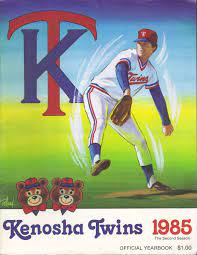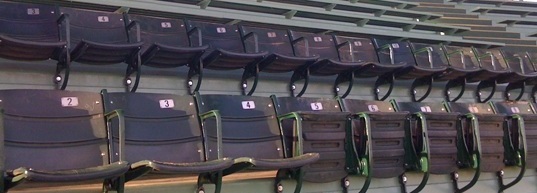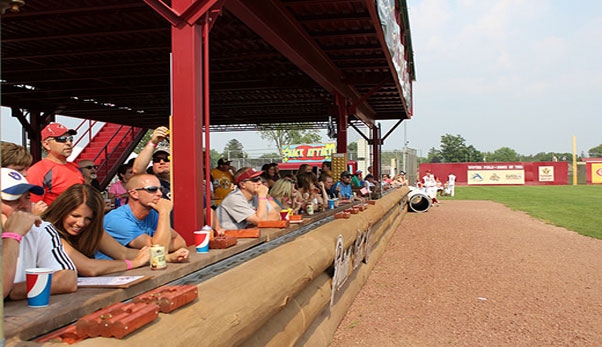If The Walls of Witter Field Could Talk…

1840 – Robert Bloomer, one of the first lumbermen and sawmill owners in Grand Rapids, bought from the United States 160 acres of land, including NESW 17. May 1st, 1845 and his patent is found recorded in Vol. ‘E” of Deeds page 121. June. 22. 1861.
1856 – The land changed hands several times before John and Margaret Compton tried unsuccessfully in 1856, to sell it to the Milwaukee and Horicon Railroad Company.
1870s – After the death of John Compton, the land went to his wife, who married Alexander D. Worden, a local businessman. During the Worden tenure, a one-third-mile track on NESW 17 became known as Worden’s Trotting Park. (Shown in top right of picture)
1876 – Cornelia Jackson, affiliated with Thomas B. Scott and J.D. Witter, obtained the 40 acres and sold it to the Wood County Agricultural and Mechanical Association, which agreed to “pay all taxes, lawfully assessed, upon said land, for the year 1876.” They would also pay $650.
1876 – The first fair, held from Oct. 8-10, was called by the Grand Rapids Tribune, “A Grand Success in Every Particular.”
1897 – “The agricultural regions near the city were then mostly undeveloped,” concluded the History, “so the stockholders, feeling that there was not sufficient demand for their wares, decided in February 1897 to dispose of the grounds and discontinue the fair.”
1902 – The fair grounds would now be called Lincoln Athletic Field.
1926 – City’s Common Council adopts resolution designating old fairgrounds as a “field for general community recreational purposes”
1928 – Isaac Witter contributes money for field development. Addition of south side ball park grandstand. Said to be when the field was “built” 
1933 – Common Council approves construction of field gateway and entrance east of original high school.
1934 – Mayor W.T. Nobles leads Independence Day dedication of new field gateway.
1935 – Lights installed at field.
1940 – Common Council changes field name to Witter Field to honor Isaac Witter a “leading citizen”
1940-1942 – Chicago White Sox start affiliate team known as the Wisconsin Rapids White Sox, a member of the Wisconsin State League, a class D level baseball league.
1946 – Wisconsin Rapids White Sox resume playing at Witter Field after WWII put baseball on hold.
1949 – Metal grandstand was constructed, replacing wooden bleachers.
1953 – Wisconsin Rapids White Sox team became inactive when the Wisconsin State League suspended operation.
1954 – Tri-City Sox team entered the Wisconsin Valley Semi-Pro Baseball League, made up of local talent. The team operated independently with uniforms and equipment from the Wisconsin Rapids White Sox.
1962 – Washington Senators Farm Director Walter Brock visited the city and approved a working agreement with Wisconsin Rapids for Class A Mid-West Baseball League operations.
1963 – The Wisconsin Rapids Senators, an affiliate of the Washington Senators, represented the city for one season in the Class-A Midwest League before becoming an affiliate of the Minnesota Twins, aptly being renamed the Wisconsin Rapids Twins.
1964 – The Wisconsin Rapids Twins inaugural game was held at Witter Field on April 26, headed by manager, Joe Christian.
1967 – Witter Field hosts Midwest League All-Star game.
1971 – American Legion program introduced at Witter Field, the Wisconsin Rapids Rangers.
1972 – American country legend Glen Campbell performs at Witter Field for over 30,000 people.
1972 & 1973 – Witter Field hosts Midwest League All-Star game.
1977 – Minnesota Twins announced they would leave Wisconsin Rapids. Twins official George Brophy stated that the parent club was “appalled at the condition of Witter Field” during a midseason visit. “We’ve never had a field like that in our farm system.”
Minnesota stated that the decision was final. But the Twins’ efforts to relocate the team to Eau Claire or St. Cloud, Minnesota faltered. Bob Arterburn of the Paper Cities Baseball Association flew to the Baseball Winter Meetings in Honolulu and successfully prevailed upon Minnesota officials to return Wisconsin Rapids for the 1978 season.

1988 & 1995 – Rangers are American Legion Triple A State Champions.
2010 – Wisconsin Rapids Rafters team introduced as a member of the Northwoods League, an NCAA summer baseball league.
March 2010 – City crews begin installing 250 seats from Milwaukee County Stadium to add box seats to the stadium.
June 6, 2010 – Wisconsin Rapids Rafters play their first game at Witter Field.
June 7, 2010 – Emore “Moe” Hill returns to Witter Field, where Northwoods League officials retire his number.
2011 – Rafters host Northwoods League All-Star Game at Witter Field.
2013 – Rafters install “Rat Trap” along third baseline, a steel, elevated private deck for group outings.
2013 – Rafters install “Home Plate Club” right behind home plate. This area has tables and is the most premium spot to watch a game at Witter Field!
 2015 – Rafters install one of a kind “Craft River” located under the Rat Trap, fans can sit at the bar and watch their adult beverage float down the “River.”
2015 – Rafters install one of a kind “Craft River” located under the Rat Trap, fans can sit at the bar and watch their adult beverage float down the “River.”
2015 – Rafters host Northwoods League All-Star Game.
2017 – Rafters receive Northwoods League Foundation grant to build an accessible seating area along the first baseline. This area provides a ramp, and a place to pull wheelchairs up to watch the game.
2021 – Rafters build an addition onto the Home Plate Club, adding a second row, due to popularity.
2022 – Rafters host Northwoods League All-Star Game.
Sources for all of this historical information include:
“River City Memoirs” by Dave Engel
Wisconsin Rapids Daily Tribune archives
“History of Wood County” by George Jones and Norman McVean
McMillan library’s “100 years of pictorial & descriptive history of Wisconsin Rapids, Wisconsin” by T.A. Taylor
Wisconsin Rapids City Times archives



